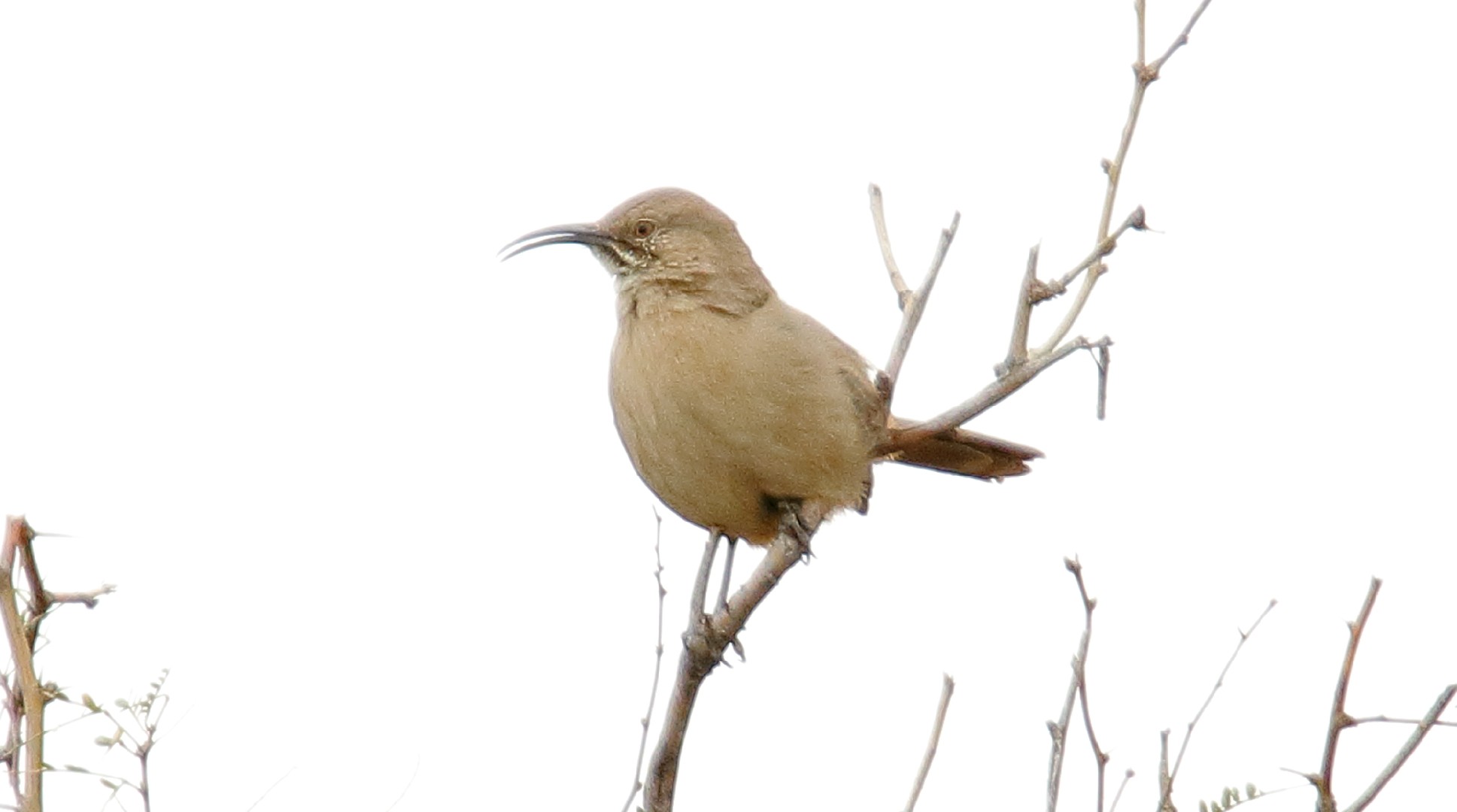Crissal Thrasher
A species of American Thrashers Scientific name : Toxostoma crissale Genus : American Thrashers
Crissal Thrasher, A species of American Thrashers
Botanical name: Toxostoma crissale
Genus: American Thrashers
Content
Description General Info
 Photo By Dominic Sherony , used under CC-BY-SA-2.0 /Cropped and compressed from original
Photo By Dominic Sherony , used under CC-BY-SA-2.0 /Cropped and compressed from original Description
The bird grows to 32 cm (12.5 inches), and has a deeply curved bill. The eyes are dull yellow. Bird expert Roger Tory Peterson described its singing as sweeter and less spasmodic than other thrashers. It can be found near desert streams in dense underbrush, mesquite thickets, willows, scrub oak, high elevations in manzanita, and in the low desert near canyon chaparral. The bird seldom flies in the open. The crissal thrasher rarely flies, preferring to walk or run around its territory and will mostly run for cover when disturbed by a potential predator. The bird's name is derived from the characteristic bright coloring, in contrast to the balance of its plumage, of the area between its tail and vent—a region known as the crissum in bird terminology. 
Size
27-32 cm (10.5-12.5 in)
Life Expectancy
11-17 years
Nest Placement
Shrub
Clutch Size
1 - 4 eggs
Feeding Habits
Crissal Thrasher primarily consume insects and spiders, foraging on the ground using their curved bills to dig and overturn debris for potential prey. They support themselves with strong legs and tail while probing into ground cover. Their diet also includes fruits, seeds, and berries, especially outside the nesting period.
Habitat
Crissal Thrasher thrives in North American desert regions and arid scrublands, specifically favoring dense brush habitats near desert streams and arroyos. They have a proclivity for mesquite bosques and brushy riparian zones with saltcedar, avoiding open deserts with sparse vegetation. These birds are typically found at lower altitudes where shrub layers are prevalent, excluding higher woodland terrains.
Nest Behavior
Crissal Thrasher's nest-building occurs in dense vegetation, with egg-laying and parental care patterns following regional climatic cues. Both parents participate in constructing the nest and caring for the eggs and subsequent young, showcasing cooperative breeding behavior typical of the species.
Nest Characteristics
Crissal Thrasher's nests are commonly located in dense shrubs or trees, frequently in mesquite, approximately 4 feet above ground, often beneath a large branch. They consist of twigs, rootlets, plant stems, hair, bark strips, grass, and feathers, measuring around 12 inches wide and 5 inches tall, with an interior cup of 3.1 inches across and 1.7 inches deep.
Dite type
Insectivorous
General Info
Feeding Habits
Bird food type
Bird Feeder Type

Ground
Sounds
Song
Recording location: United States
Behavior
Crissal Thrashers exhibit year-round territorial defense, with males prominently singing to assert claims, escalating during breeding season which varies with elevation. Daily routines involve foraging for insects and seeds, nest building, and interacting sparingly with neighboring crissal Thrashers, except during territorial disputes that might include wing-raising chases. Both sexes share nesting duties, and some pairs may produce multiple broods. Post-fledging, juveniles are often encouraged to vacate. Most crissal Thrashers are non-migratory, though some reposition seasonally for optimal conditions.
Species Status
Not globally threatened.
Scientific Classification
Phylum
Chordates Class
Birds Order
Perching birds Family
Mimids Genus
American Thrashers Species
Crissal Thrasher